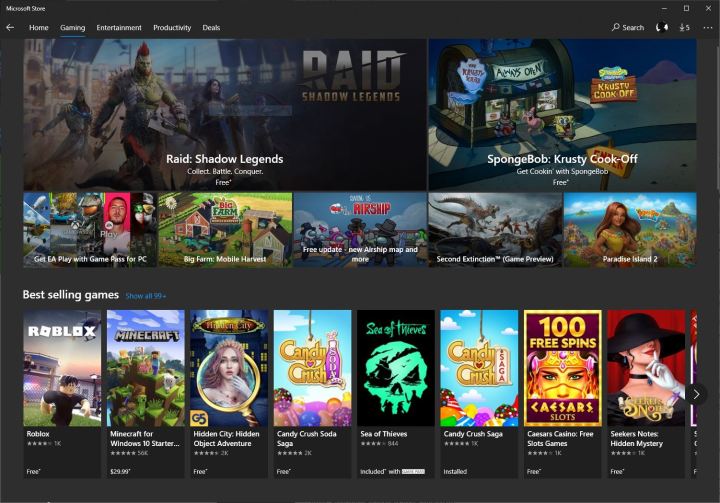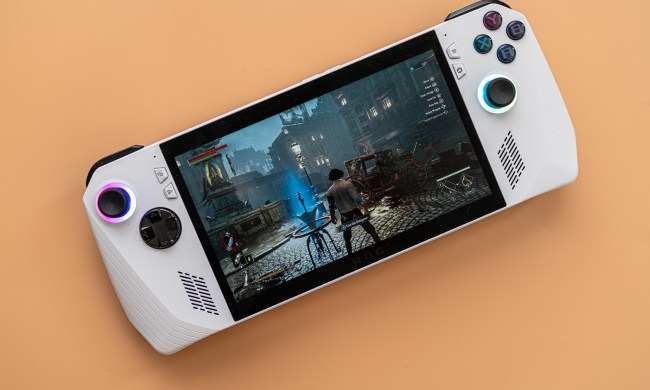Microsoft announced today that it’s cutting its revenue share for games on the Windows Store from the industry-standard 30% to only 12% starting August 1. The announcement is a clear shot at Steam, which has long dominated the PC gaming space and still demands 30% from game publishers. Microsoft joins Epic Games at the 12% mark, applying even more pressure on Steam to overhaul its business model.

Although the announcement looks like a few multibillion-dollar corporations duking it out for the top spot, Valve has lost a lot of favor with game developers and publishers. A recent GDC poll showed that only 3% of participants agreed with the 30/70 split used across the industry. Platforms like Google Play and the Epic Games Store have combated the issue by reducing the cut after a certain amount of revenue or just reducing it all together. Steam has a similar program after software generates more than $10 million in sales, but it still holds one of the most expensive revenue-sharing agreements in the space.
The poll showed that 23%, a plurality of participants, thought a 10% revenue share was fair, while an additional 20% thought 15% was fair. When asked specifically about Steam, only 6% of developers said the 30% share was fair. As the GDC report puts it, “one has to wonder how much longer Valve and Steam can hold onto this premium rate.”
Microsoft hopes that it can attract more developers to the Windows Store by undercutting Steam. “A clear, no-strings-attached revenue share means developers can bring more games to more players and find greater commercial success from doing so,” stated Matt Booty, head of Xbox Game Studios, in a blog post.
The change is as much of a response to Steam as it is to the Epic Games Store. Last year, the Epic Games Store reached over 160 million users, and 36% of its PC game sales came from third-party titles. Platform exclusives like Fortnite, Borderlands 3, Godfall, and Tony Hawk’s Pro Skater 1+2 were among Epic’s most popular games last year, too, suggesting that an aggressive revenue-sharing deal will attract big-budget titles.

Microsoft will need to do more than hand out money, though, and the company knows that. Booty continued, “We know that we still have a lot of work to do, but based on the response from both PC gamers and PC game developers, we think that we’re headed in the right direction for this community with the investments we’re making.” That work likely includes broadening support for traditional Win32 games on the Microsoft Store. Microsoft supports these games, though it still favors its own UWP format for most releases.
The most difficult hurdle Microsoft needs to overcome, though, is mind share. The GDC poll mentioned above shows that most PC developers still make most of their money through Steam, and although platforms like the Epic Games Store are challenging that, Valve holds the PC market. The Microsoft Store may attract developers with its new revenue-sharing program, but it needs to attract gamers too.

Xbox is renewing its commitment to PC gaming, which could bolster the new program. It announced today that the hotly anticipated Halo Infinite will support cross-play and cross-progression across Xbox platforms and PC. The game is also launching on Xbox Game Pass, and the Game Pass for PC roster continues to grow, enticing new players to get on board.
Even with that, Microsoft needs to consider the libraries players already have on Steam. Many players have hundreds, if not thousands, of digital-only titles, and with no clear way to access them should Steam fall out of favor, many players are holding onto the platform that’s become synonymous with PC gaming.
Microsoft has no plans to reduce the revenue share on Xbox, however. Sony and Microsoft still maintain a 30% revenue share on their respective platforms, though that figure factors in the console and closed ecosystem that comes along with one.




